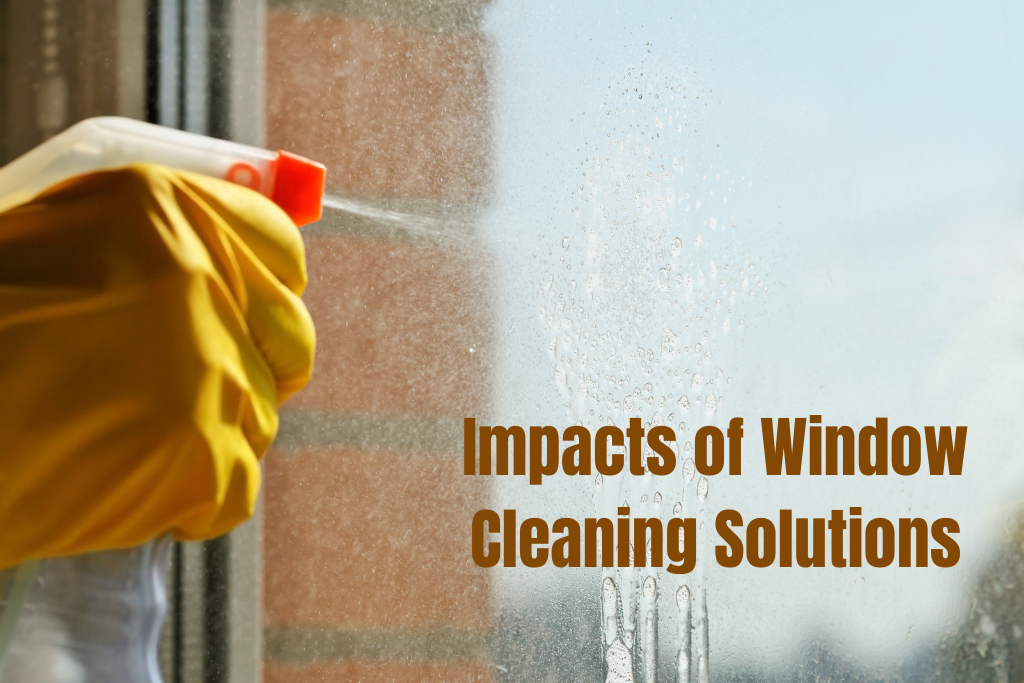Introduction
Window cleaning is essential for maintaining the aesthetics and functionality of buildings. However, the solutions used in this process can significantly impact the environment. Many traditional window cleaning products contain harmful chemicals that pose risks to both human health and the ecosystem. This article explores the environmental impacts of window cleaning solutions, emphasizing the importance of choosing eco-friendly alternatives.
The Composition of Window Cleaning Solutions
Most conventional window cleaning solutions are composed of various chemicals, including ammonia, alcohol, and phosphates. These substances are effective at removing dirt and grime, but they can also lead to harmful environmental consequences:
- Chemical Runoff: When window cleaning solutions are washed away during rain or rinsing, they can enter stormwater systems. This runoff often carries toxic chemicals into rivers, lakes, and oceans, harming aquatic life and contaminating drinking water sources.
- Volatile Organic Compounds (VOCs): Many cleaning products emit VOCs, which contribute to air pollution and pose health risks. VOCs can lead to respiratory problems and other health issues in humans and animals.
- Phosphates: Found in some cleaning products, phosphates can lead to eutrophication in water bodies. This process promotes excessive algae growth, depleting oxygen levels in water and endangering fish and other aquatic organisms.
The Impact on Ecosystems
The use of harsh window cleaning solutions can disrupt local ecosystems in several ways:
- Aquatic Life: Chemicals like ammonia and bleach can be toxic to fish and other aquatic organisms. Exposure to these substances can lead to fish kills and the degradation of biodiversity in affected habitats.
- Soil Contamination: When these chemicals seep into the ground, they can contaminate the soil and affect plant growth. This contamination can disrupt food chains and lead to a decline in local flora and fauna.
- Pollution of Water Sources: The runoff from cleaning solutions can affect the quality of drinking water. Contaminated water sources can lead to health issues for humans and wildlife alike, creating a cycle of environmental harm.
Eco-Friendly Alternatives
In response to the environmental impacts of traditional window cleaning solutions, many companies and consumers are turning to eco-friendly alternatives. These products are often biodegradable and free from harsh chemicals. Some popular options include:
- Vinegar and Water: A simple mixture of vinegar and water can effectively clean windows without harming the environment. Vinegar is a natural disinfectant that breaks down grime and leaves a streak-free finish.
- Baking Soda: Baking soda is another eco-friendly option that can help remove tough stains. When mixed with water, it creates a gentle abrasive that can clean without causing damage to surfaces.
- Commercial Eco-Friendly Cleaners: Several brands now offer eco-friendly window cleaning solutions that are certified green. These products are designed to clean effectively while minimizing environmental impact.
Conclusion
The environmental impacts of window cleaning solutions are significant and often overlooked. By understanding the consequences of using traditional cleaning products, we can make more informed choices that benefit both our health and the environment. Opting for eco-friendly alternatives not only ensures cleaner windows but also helps protect our planet for future generations. As awareness grows about the importance of sustainable practices, the shift toward greener window cleaning solutions is a crucial step in reducing our ecological footprint.






Comments